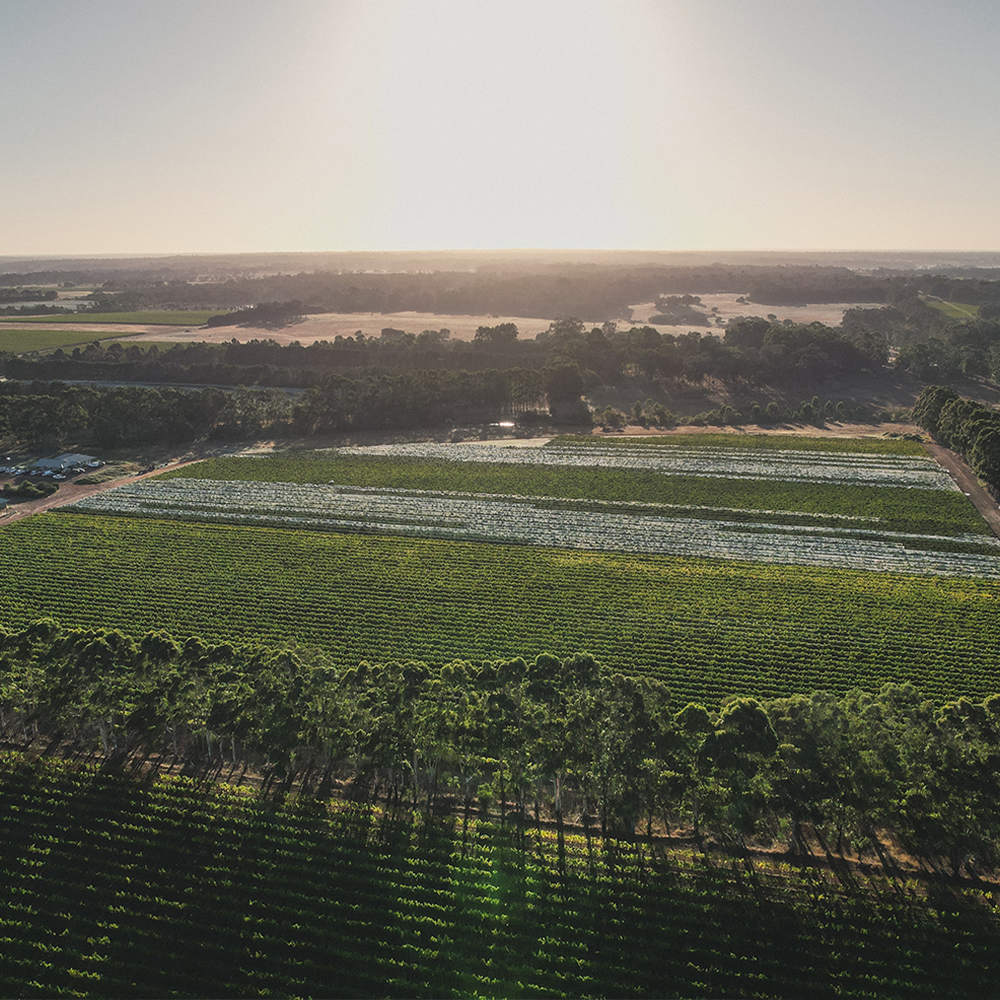PROTECTING BOODJIDUP BROOK
It’s been over 15 years since Voyager Estate first recognised the need to protect and improve the health of the Boodjidup Brook catchment area.
The Boodjidup Brook and its tributaries run right through our Estate, entering and exiting at multiple locations. Maintenance of the riparian zones (the area where the water meets the land) is vital to prevent erosion, increase biodiversity, and ensure water quality.
An action plan released by the Cape to Cape Catchments Group back in 2009 provided various recommendations on how we could enhance and restore the existing natural environment, including building fences, weed management, installation of vegetation ‘buffers’ using local species, and controlling erosion.
The team took these recommendations and got to work! Each riparian zone was mapped out with its own unique staged action plan, depending on the level of degradation and restoration that was needed. They prepared the site for planting by ripping and mounding the soil and removing weeds where necessary (nightshade, thistle, reeds, and bridal creeper just to name a few).
As the business evolved on the pathway to organic certification, in a bid to outcompete weeds without herbicide use, they also increased our tree planting density. Based on suitability to soil type and moisture content, native species were carefully selected including marri, wattle, banksia, blackbutt and kangaroo paw. Fencing was installed to keep grazing livestock from eating the precious new seedlings. The team further combatted erosion with the placement of rocks in the water channels. This created ‘rock pitches’ to slow water flow through these areas, stabilise banks and allow new plants to establish.
Previously, Weightmans Dam was an eroded and overgrazed sheep paddock. Dry and dusty in summer and boggy pools of water in winter. When the dam build was completed in 2017, more than 20,000 native species were planted around it, creating an aquatic habitat, controlling water flow, and stabilising the natural environment.
Since commencing the revegetation project all those years ago, more than 60,000 native species have been planted across our property – an amazing achievement. We now monitor and maintain the rehabilitated areas through ongoing livestock exclusion and weed management. Planting in higher densities at the start, combined with a ‘light-no-touch’ approach, has resulted in significant natural ecological regeneration.
In addition to these efforts, the team have also been testing the waterways throughout the property since 2007. Samples have been taken quarterly at Weightmans Dam, providing insights into the impact our farming practices have on water quality and how our rehabilitation efforts are mitigating these impacts. Creating an ecological wetland system is nature’s defence against water pollutants.
We are seeing promising results, in both the decrease in nitrate levels and an increase in biodiversity. Weightmans Dam has seen a marked increase in critters like birds and frogs. With time, the team are hoping to be able to class this area as ‘native species dominant’.
The rehabilitation of the Boodjidup Brook area is a complex and ongoing effort, and is nicely summarised by Voyager's Technical Viticulturist, Alex Miller.
"The sum of all parts has created a patchwork of native vegetation corridors through Voyager Estate, with significant increases in biodiversity, stabilising watercourses and natural habitats for a diverse range of beneficial flora and fauna," she says.
